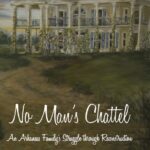In 1857, when Patrick MacLayne brought Laurel to Shiloh, Greensboro would have been their nearest “town”. Established in the late 1830’s, the town had grown into a bustling village in frontier Arkansas. Excellent camping areas along Lost Creek provided an incentive to settlers. The first blacksmith shop and a store were built to serve the needs of those camper, many of whom found the abundant water and good soil at the foot of Crowley’s ridge reason enough to remain. The next two decades brought the settlement to the size of a town by the middle of the 1850’s. At that time, the “Metropolis of Northeast Arkansas” was in the southern most part of Greene County, and it was gaining a reputation for being a “rowdy little place.” While it is true that several “dram shops”, a pleasant name for a saloon, operated in the town, Greensboro was home to several business, such as mercantiles, gristmills, livery stables, and even a hotel. The progressive community also had a school prior to the Civil War, a rarity for our state outside Little Rock and Washington County. Most communities that had a school provided a subscription school sponsored by local churches.
Greensboro benefited from being on the primary road between St. Louis and Wittsburg, a port town near Wynne. The old military road is the present day Greensboro Road. The frontier town of Greensboro received supplies from oxen and mule drawn freight wagons from the ports on the Mississippi, like St. Louis and Wittsburg and from Jacksonport, a steamboat stop on the Black and White Rivers. With access to supplies over fair roads, a novelty in pre-Civil War Arkansas, and the abundance of free or very cheap land, the settlers continued to move into the area until the advent of the war.
In 1859, the state legislature set aside a portion of Greene and Poinsett Counties to create the present county of Craighead. At the time, citizens of Greensboro had high hopes that their rapidly growing community would be named the county seat. Dr. Edward Gibson, a physician in Greensboro, even sat on the commission to name the county seat. Even with his influence, Jonesboro was selected. At that time, Jonesboro was hardly more than a livery stable and a dream, but the settlement was much more centrally located in the area that had been set aside for the new county.
Regardless, Greensboro continued to grown. Just prior to the beginning of the Civil War, Greensboro had become a real town…no longer a frontier community. The 1860 census identified three doctors besides Dr. Gibson and several tradesmen, such as cabinet makers, wheelwrights, saddlers, a shoemaker,and even a jeweler. One woman made her living as a seamstress for the town. Besides doctors, Greensboro was home to a druggist, two teachers and one lawyer. The area around the town, which included Shiloh, the Powell Settlement, and seven other townships continued to grow, attracting homesteaders and farmers.
Mac and Laurel would have known this Greensboro. Dr. Gibson prevents Laurel from developing blood poisoning after a snake bit. Al Stuart files the deed to Widow Parker’s homestead when Laurel buys the property. In the second volume, Mac makes use of the local jeweler and saddler to purchase gifts for his growing family. The MacLayne’s attend debate days and street dances on the main street of the antebellum Greensboro. Unfortunately, in the last volume of the Shiloh Saga they will begin to witness the decline of the town, which will suffer greatly from the defeat of the Confederacy and the difficulties of living under the Reconstruction Government. Many of the men of the area never return from the war, and those who do found it nearly impossible to return to “normal” conditions in the area they’d left.







Leave a Reply